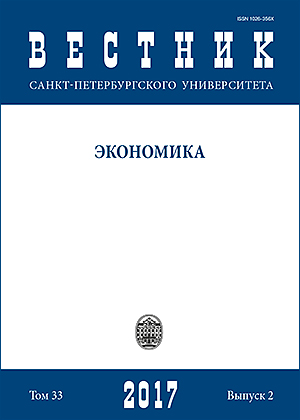Переход к циркулярной экономике и замкнутым цепям поставок как фактор устойчивого развития
DOI:
https://doi.org/10.21638/10.21638/11701/spbu05.2017.203Аннотация
В статье анализируется процесс формирования циркулярной экономики и отвечающих ей замкнутых цепей поставок в рамках поэтапного перехода к современному варианту устойчивого социально-экономического развития. Раскрывается роль циркулярной экономики в ресурсосбережении, минимизации отходов и сокращении давления на окружающую среду при одновременном достижении значимых экономических и социальных результатов. Объектом специального внимания являются барьеры на пути развития циркулярной экономики в РФ, а также существующие в этой области возможности для обоснования стратегии перехода от доминирующей сегодня линейной модели экономики к циркулярной. Проводимое в статье исследование различных бизнес-моделей циркулярной экономики способствует пониманию той роли, которую может играть каждая отдельная компания в трансформации линейной экономики в более устойчивую циркулярную модель. В данном контексте идентифицируются перспективы применения циркулярных бизнес-моделей в ряде секторов российской экономики и возможности их внедрения в практическую деятельность компаний.
Ключевые слова:
циркулярная экономика, замкнутые цепи поставок, управление отходами, рециклирование, ремануфактуринг, циркулярные бизнес-модели, индекс развития циркулярной экономики, институциональные барьеры
Скачивания
Библиографические ссылки
References in Latin Alphabet
Translation of references in Russian into English
Загрузки
Опубликован
Как цитировать
Выпуск
Раздел
Лицензия
Статьи журнала «Вестник Санкт-Петербургского университета. Экономика» находятся в открытом доступе и распространяются в соответствии с условиями Лицензионного Договора с Санкт-Петербургским государственным университетом, который бесплатно предоставляет авторам неограниченное распространение и самостоятельное архивирование.






